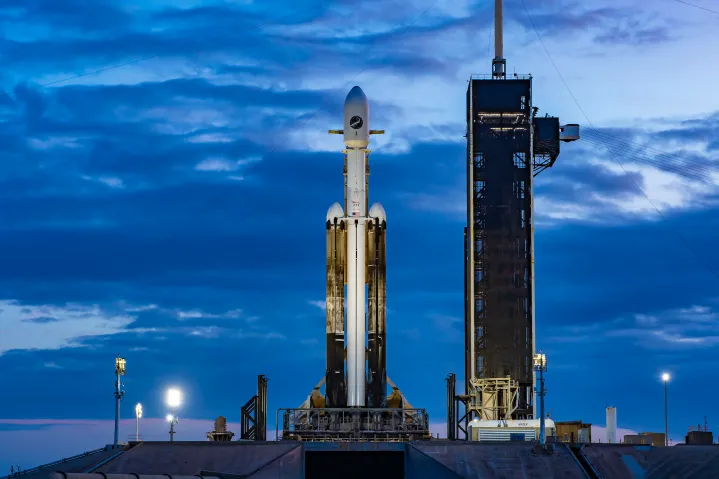
SpaceX has revealed a new target launch date for a mission that will see its triple-booster Falcon Heavy rocket carry an experimental space plane to orbit for the U.S. Space Force.
The private spaceflight company has announced that it’s now targeting the launch for no earlier than Thursday, December 28.
Last week, SpaceX stood down from launching the rocket four times, on consecutive days. Reasons included poor weather conditions at the launch site at the Kennedy Space Center in Florida, and an unspecified “side issue” on the ground. At no point has there been any suggestion of a problem affecting the rocket itself, which will be launching for only the ninth time in its five-year history when the mission finally gets underway.
With the Falcon Heavy packing 5.5 million pounds of thrust at launch, the liftoff promises to be a real spectacle for anyone viewing it in person or watching the live stream.
But while the Falcon Heavy is three times more powerful than SpaceX’s workhorse Falcon 9 rocket, it’s considerably less powerful than the company’s next-generation Starship vehicle (comprising the first-stage Super Heavy rocket and second-stage Starship spacecraft), which failed to reach orbit on its first two test flights, the most recent of which took place last month.
The Falcon Heavy will deploy the Space Force’s X-37B space plane on what will be its seventh mission since its first one in 2010. The uncrewed space shuttle-like vehicle will conduct various tests while in orbit, including flying in “new orbital regimes, experimenting with future space domain awareness technologies, and investigating the radiation effects on materials provided by NASA,” according to the Space Force.
Digital Trends has an article featuring everything you need to know to watch the mission, which will include not only the launch, but also the return to Earth of the Falcon Heavy’s two side boosters, which will be used again.


